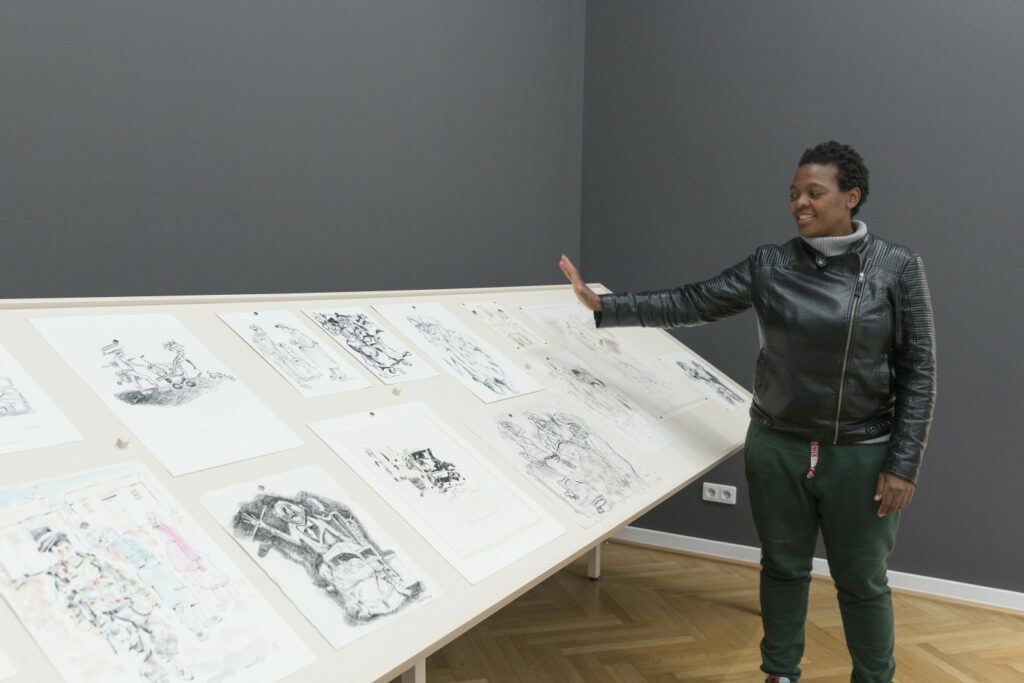If you see this after your page is loaded completely, leafletJS files are missing.
By Soojin Rhyu-Han from Punggyeong World Cultures e.V.

In apartheid South Africa, the political situation had hardened extremely in 1960 after the Sharpeville massacre, the shooting of 69 demonstrators and the injury of many other racialized people in what is now Gauteng province. The government declared a state of emergency, arrested tens of thousands of strikers, and illegalized the ANC (now the ruling party) and PAC resistance movements. The UN Security Council and the Commonwealth of Nations (linking former colonies of Great Britain) strongly condemned the massacre. After a vote among the white population, South Africa withdrew from the Commonwealth and renamed itself the “Republic of South Africa.” The black population continued to struggle with demos, strikes, student:ing riots, and armed resistance. Despite the difficult conditions, critical artists were still forming and various art spaces were created to promote them.
Hans Blum, from Frankfurt, had worked as a pastor for the Evangelical Lutheran Church in Gauteng (then Transvaal) in the 1960s and had assembled a private art collection. The Weltkulturen Museum Frankfurt, initiated by Afrikakustodin Johanna Agthe, has been collecting contemporary African art since 1974. In 1986, Director Josef Franz Thiel commissioned Hans Blum to purchase works of art from South Africa with 100,000 DM. Hans Blum traveled to South Africa for six weeks and, with the help of artist and curator Bongi Dhlomo-Mautloa, collected some 600 works by exclusively black artists. Among them were works by Peter Clarke, David Koloane, Sam Nlengethwa and John Muafengejo, for example. Blum tried to pay the price that the artists demanded without negotiating. This gave the local artists courage, self-confidence and, above all, the means to feed themselves and their families.
In the 1980s and 1990s, there was a global wave of African art exhibitions and art studies. Since the 2010s, interest in non-European contemporary art has once again increased greatly. In 2015, the Weltkulturen Museum opened the exhibition A Labor of Love, which was received with great interest. The collection today includes over 3000 works.
“We loved our Culture, we loved ourselves, and we had ammunition to fight back to the system.” says Sam Nhlengethwa.
From 2015 to 2016 the collection was exhibited again, some new works were added, among others by the artist and co-curator Gabi Ngcobo (see picture above).
